
10 wind-resistant shrubs
Discover our selection of plants that are not afraid of storms
Contents
Strong winds are not just a problem for gardeners living along the coasts. Even inland, many gardens are regularly battered by prevailing winds.
Wind-resistant plants do exist and can be used in all our gardens often exposed to gusts, both in winter and summer. For wind protection, it is ideal to choose native shrubs that grow naturally in your area. You will find shrubs with spring, summer, autumn flowering, and even those with winter interest for a beautiful windbreak hedge or lovely borders throughout the seasons.
The choice should primarily focus on sturdy bushes with deep roots that will not bend in the face of gusts. Discover all our tips for selecting the best wind-resistant shrubs.
To avoid any failures, we advise you to plant appropriately: feel free to adopt our web application Plantfit.
Holly
Partial shade plant, holly Ilex aquifolium is known for its red berries. Holly is evergreen and suckering. It is highly recommended for creating dense hedges that can filter out the prevailing cold winds, which it does not fear. This bush requires very little maintenance and can grow almost anywhere. It enjoys the slightly humid atmosphere of coastal areas. With slow growth, hollies are not very tall (around 3 to 5 m). Common holly can live for over 300 years. Its leaves are dark green. They often have a dentate and thorny edge (be careful with your pets and children).
 Holly makes excellent decorative hedges for a windy garden
Holly makes excellent decorative hedges for a windy garden
The White Dogwood 'Elegantissima'
The White Dogwood ‘Elegantissima’ or Cornus alba ‘Elegantissima’ features decorative green foliage marginate with white and striking red bark that stands out in the garden during winter. In May, white flowers appear, followed in autumn by bluish-black berries that contrast beautifully with its vibrant red foliage. This hardy and suckering bush can reach a height of 1 to 2 m. The White Dogwood ‘Elegantissima’ is resistant to cold winds in winter. It prefers to grow in full sun or partial shade in slightly moist, permeable soil.

Cornus alba ‘Elegantissima’
Discover other Shrubs
View all →Available in 0 sizes
Available in 1 sizes
Available in 1 sizes
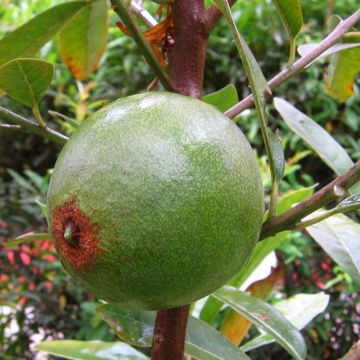
Available in 1 sizes
Available in 1 sizes
Available in 1 sizes
Available in 1 sizes
Available in 2 sizes
Available in 1 sizes
Available in 1 sizes
The Portugal Laurel and the Cherry Laurel or Palm Laurel
The Portuguese laurel Prunus lusitanica and the cherry laurel or laurel palm Prunus laurocerasus are two vigorous and hardy shrubs remarkable for establishing hedges and windbreaks. Both are evergreen and produce small, fragrant cream-white flowers from May. They attract bees and butterflies.
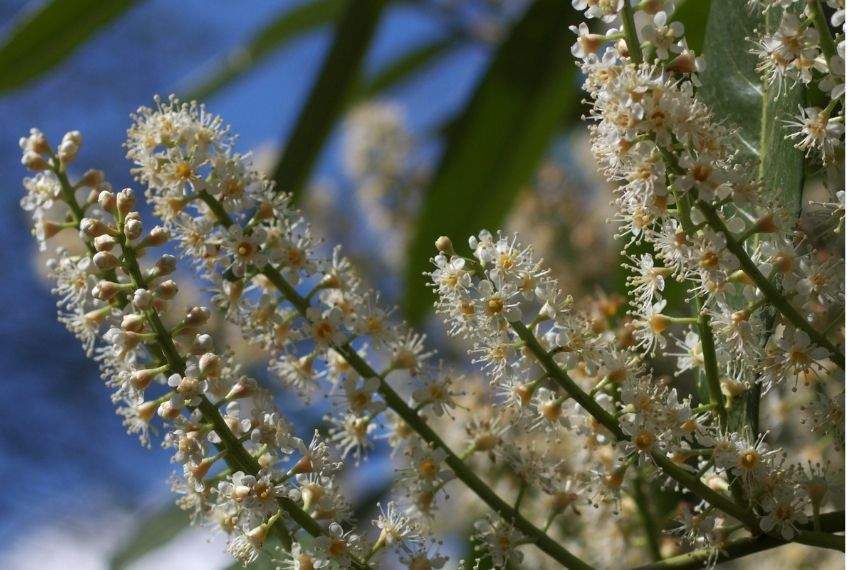
Flowering of the prunus laurocerasus, a remarkable species for establishing screens
The Portuguese laurel grows well in all soils, provided they are not waterlogged. It also grows in shallow calcareous soil where the cherry laurel refuses to thrive. The contrasting colour of the glossy dark green leaves and their red petioles creates a stunning visual effect. It is the ideal plant for all well-exposed coastal gardens. Its robust nature allows it to withstand intense sunlight as well as winter temperatures and salty winds: perfect for creating beautiful, wind-resistant privacy hedges against the Mistral!
 The Portuguese laurel is suitable for all soils but needs sunlight to flower
The Portuguese laurel is suitable for all soils but needs sunlight to flower
Discover all our laurels to create magnificent hedges.
Read also
How and why to create a windbreak hedge?Amelanchier
Amelanchier canadensis is highly decorative and easy to grow. This beautiful deciduous bush can reach up to 5 m in height. It is loved for its light, white spring flowering, reminiscent of a bride’s veil, and for its scarlet foliage in autumn. It requires no maintenance and tolerates drought perfectly. Thanks to its hardiness, the amelanchier is ideal for borders or free-standing windbreaks. Its flamboyant autumn foliage adds a bright touch to the garden.
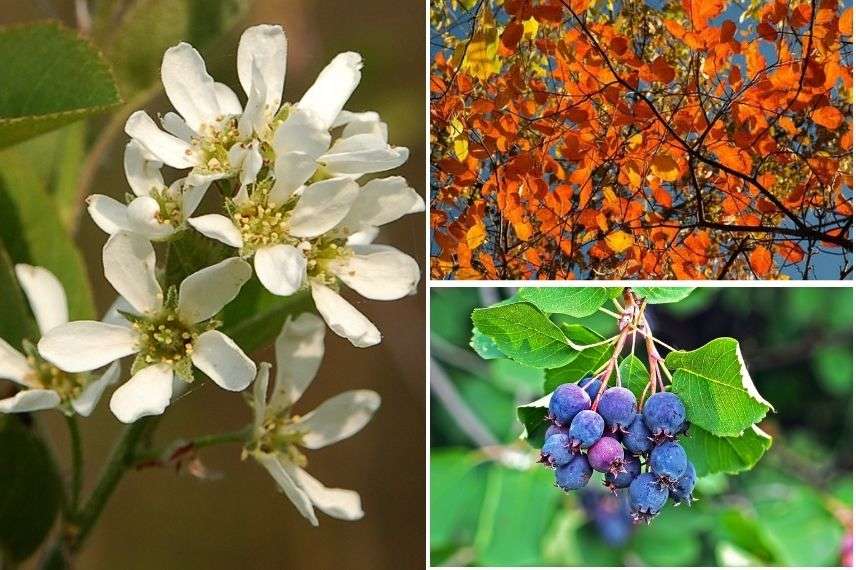
The amelanchier offers interest in the garden throughout the year
Spring Tamarisk
Tamarix tetandra, or Spring Tamarisk, is the ideal shrub for windbreak plantings in free hedges, especially in coastal regions. Its characteristic flowering, with long pink feathery inflorescences, appears in spring and lasts throughout the summer. Of relatively rapid growth, it has a loose and trailing habit, reaching 4 to 5 m in height and 2 to 3 m in width. Deciduous, its leaves are a rich green before turning yellow in autumn. A plant that withstands sun and wind, it is extremely tolerant of seaside conditions, enduring salt and wind without flinching. It is a very hardy tree as long as the soil is well-drained.
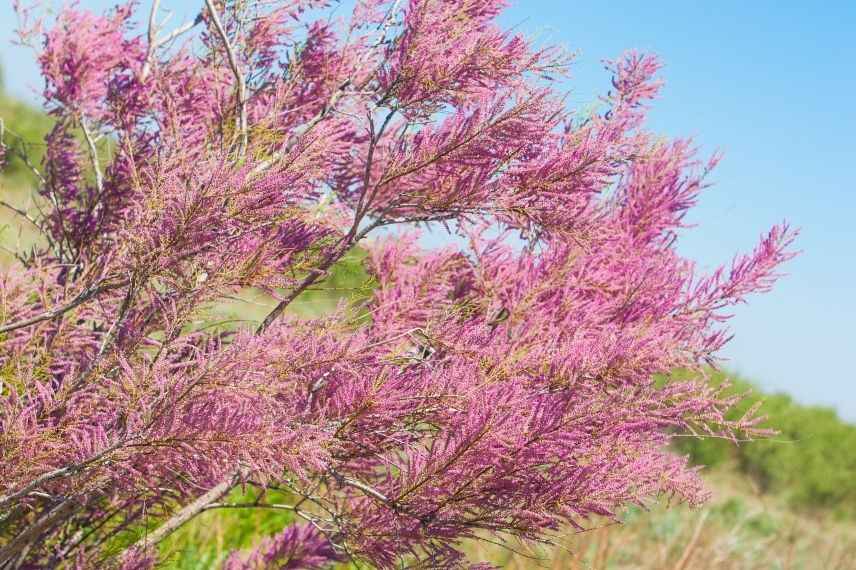
Generous flowering of the tamarisk
Aronia
Aronia arbutifolia is a very decorative deciduous shrub. Its dark green foliage turns a brilliant red in autumn. Large clusters of melliferous white flowers appear in May-June, followed by small red fruits, edible in jam with a flavour similar to blackcurrant and favoured by birds. Suckering this beautiful hardy shrub grows to 2 to 3 m tall at maturity and is ideal for a country hedge to filter wind, in a border, or as a specimen plant.
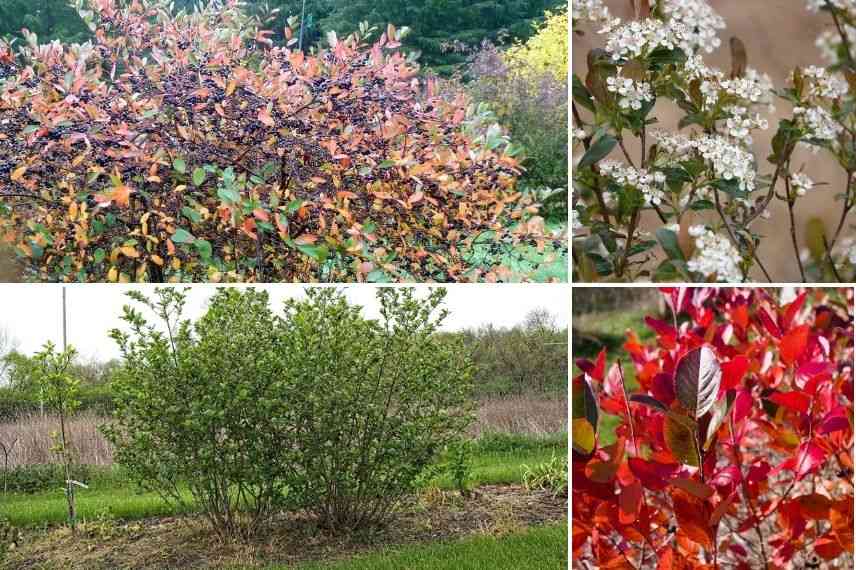
Hardy bush, Aronia will surprise you with its ease of cultivation
Sea Buckthorn
Sea buckthorn Hippophae rhamnoides is a spiny shrub that is heavily ramified, reaching heights of 2 to 3 m and can sometimes become a small tree up to 5 m tall. It is one of the most wind-resistant native woody species and requires a lot of light. It thrives in sandy maritime regions and makes an excellent windbreak in exposed coastal areas. Sea buckthorn attracts many birds and animals, prevents erosion, and helps to stabilise dunes. Its deciduous leaves are very narrow, grey-green on the upper side and silver-grey underneath. Its very small greenish flowers appear in April and are followed by edible fruits that are yellow or orange. A dioecious shrub, male and female flowers are found on separate plants. It is often planted as a fruit tree.
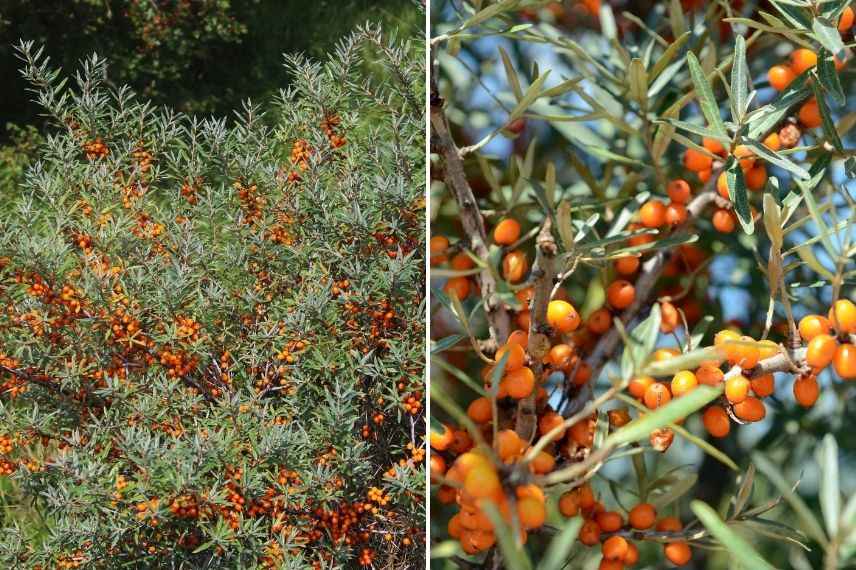
Sea buckthorn is primarily known for its decorative and medicinal berries
The Hazel tree
The hazel Corylus avellana is a hardy shrub with deciduous foliage. A woodland edge plant, it is a common and pioneering species in forest hedges and woods. The hazel is therefore an essential shrub for wind protection. Pollination of the hazel’s aments occurs by wind. It enjoys good atmospheric humidity and pleasant light. Not demanding, the hazel thrives in any well-drained soil and in any sunny, open location.

The male flowers (aments) and female flowers (yellow flowering) of the hazel need wind for pollination (anemophilous plant)
The grey willow and the goat willow
The grey willow Salix cinerea is a large native bush, very hardy, with male specimens displaying decorative flowering at the end of winter. It is well adapted to wind exposure in wet areas. Its growth is medium-fast, but it self-seeds easily. Branches that touch the ground root naturally. It thrives on water and can withstand prolonged flooding. It enjoys full sun.
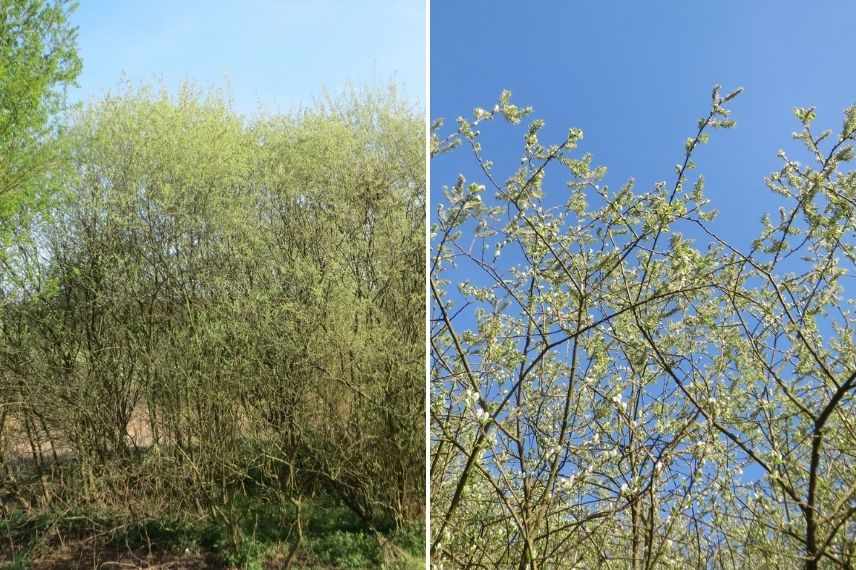
The flexible habit of the grey willow withstands the mechanical effects of the wind well
Among the great diversity of willow species, the goat willow Salix caprea is, depending on the case, a very vigorous bush or pioneer tree. Its early flowering in February-March reveals clusters of colourful aments heralding spring. In full sun or partial shade, it withstands wind and spray well. Its early flowering at the end of winter provides pollinating insects with an opportunity to feed after a long period of dormancy.
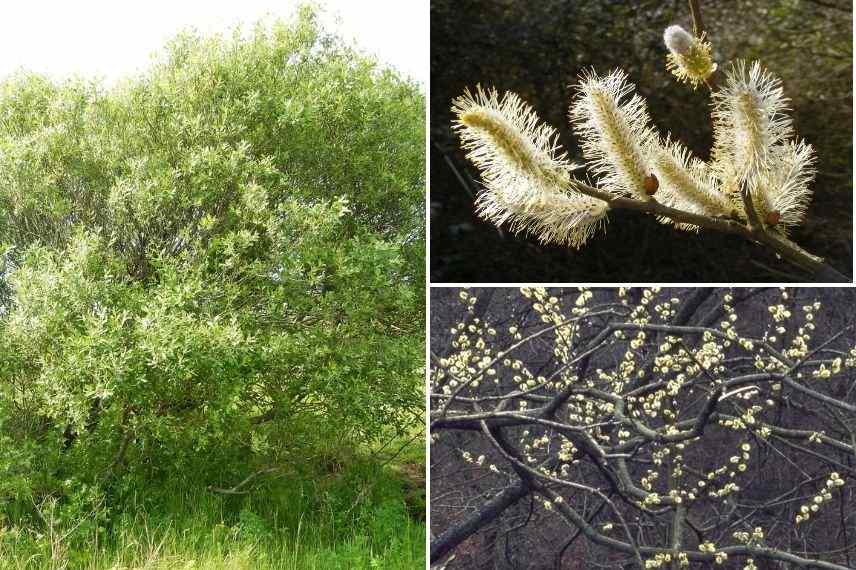
The generous flowering of the goat willow delights bees at the end of winter
The Russian olive tree
The Russian olive Eleagnus angustifolia is a large spiny deciduous shrub or a small tree with a rounded habit, but it can be loose and irregular. In spring, you will enjoy a soft and subtle flowering with a strong honey-like fragrance. It is one of the best melliferous species. In autumn, yellow and silver fruits will appear, which are both edible for humans and highly appreciated by birds. However, be cautious of its thorns and suckers. Very hardy, it copes well with urban environments. It is also well-suited for coastal plantings (tolerates sea spray). It can be used to stabilise the soil on slopes, as a spiny hedge or windbreak hedge.

A highly decorative shrub, the Russian olive is very resistant to wind and pollution
- Subscribe!
- Contents
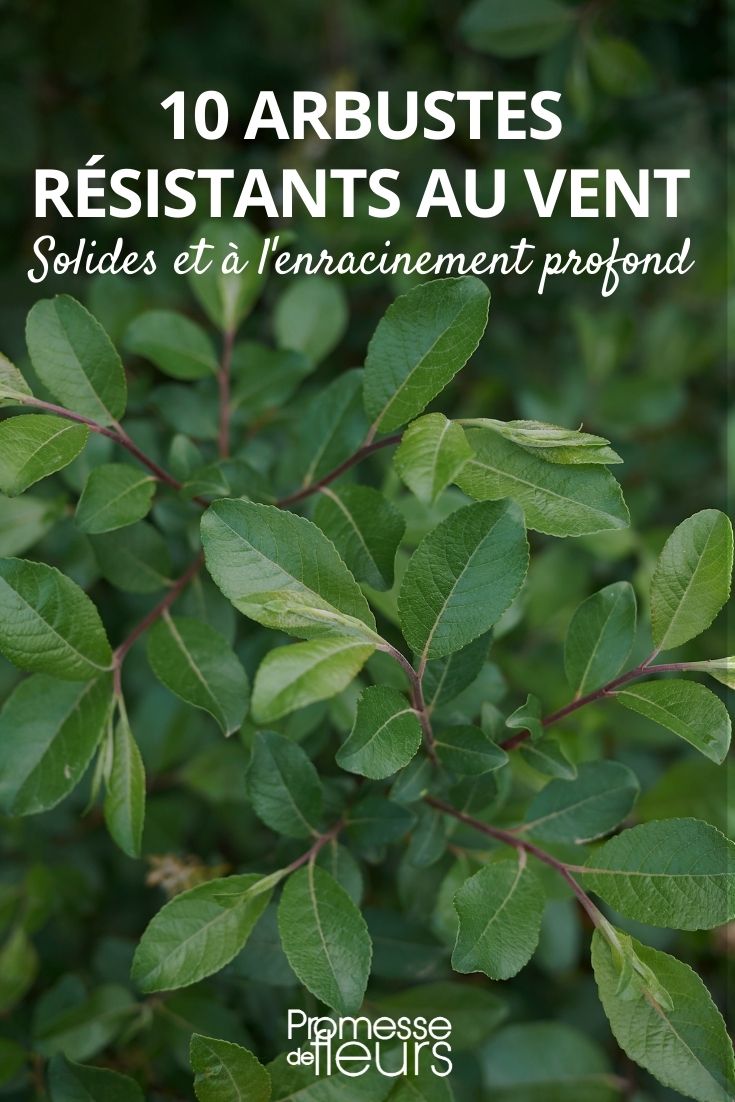
































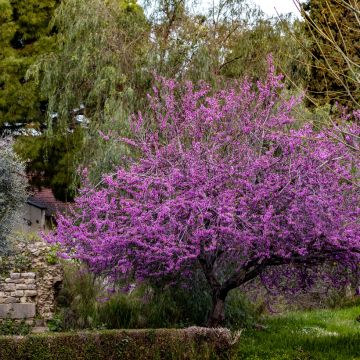
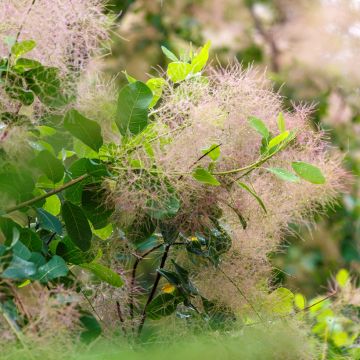




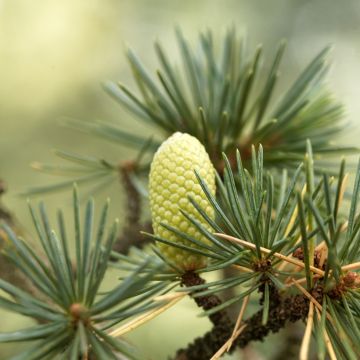
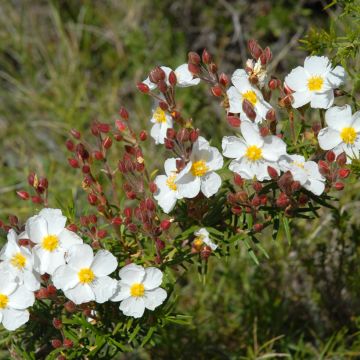
Comments